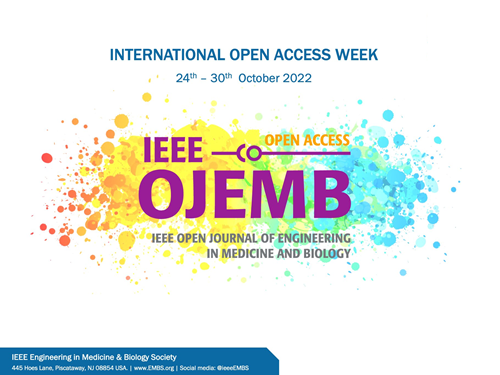Ultrasound Segmentation Using Semi-Supervised Learning: Application in Point-of-Care Sarcopenia Assessment
IF 2.9
Q3 ENGINEERING, BIOMEDICAL
IEEE Open Journal of Engineering in Medicine and Biology
Pub Date : 2025-01-31
DOI:10.1109/OJEMB.2025.3537560
引用次数: 0
Abstract
Ultrasound imaging is crucial in medical diagnostics, offering real-time visualization of internal anatomical structures. However, accurate automatic segmentation of ultrasound images remains challenging, particularly in scenarios with limited labeled data. In this paper, we propose a semi-supervised learning approach for ultrasound image segmentation, leveraging the statistics of data in unlabeled images to enhance segmentation accuracy. Our method builds upon the encoder-decoder architecture and incorporates innovative semi-supervised learning techniques based on contrastive learning. We have collected ultrasound images from 80 patients and 34 healthy volunteers, focusing on applications in sarcopenia assessment and emergency response scenarios. We demonstrate the effectiveness of our approach through extensive experiments on expert segmentations in this dataset.Our results demonstrate the superior performance of the proposed method across various training data splits (i.e., 1%, 5%, 10%, 20%, 30%, and 100%). While U-NET performed the best with 100% of the training data (i.e., 154 annotated images), the proposed method achieved comparable performance with only 10% of the data (i.e., 16 annotated images). Furthermore, statistical analysis confirmed that our method significantly outperforms existing models, including U-NET, CCT, and UniMatch, in most scenarios (i.e., training set splits). These findings highlight the robustness and efficiency of the proposed method, especially in environments where labeled data is scarce使用半监督学习的超声分割:在即时肌少症评估中的应用
超声成像在医学诊断中是至关重要的,它提供了内部解剖结构的实时可视化。然而,超声图像的准确自动分割仍然具有挑战性,特别是在标记数据有限的情况下。在本文中,我们提出了一种半监督学习的超声图像分割方法,利用未标记图像中的数据统计来提高分割精度。我们的方法建立在编码器-解码器架构的基础上,并结合了基于对比学习的创新半监督学习技术。我们收集了80名患者和34名健康志愿者的超声图像,重点研究了在肌肉减少症评估和应急响应场景中的应用。我们通过对该数据集的专家分割进行广泛的实验来证明我们方法的有效性。我们的结果证明了所提出的方法在各种训练数据分割(即1%,5%,10%,20%,30%和100%)上的优越性能。虽然U-NET在100%的训练数据(即154张带注释的图像)上表现最好,但所提出的方法仅在10%的数据(即16张带注释的图像)上取得了可比的性能。此外,统计分析证实,我们的方法在大多数场景(即训练集分割)中显著优于现有模型,包括U-NET, CCT和UniMatch。这些发现突出了所提出方法的鲁棒性和效率,特别是在标记数据稀缺的环境中
本文章由计算机程序翻译,如有差异,请以英文原文为准。
求助全文
约1分钟内获得全文
求助全文
来源期刊

IEEE Open Journal of Engineering in Medicine and Biology
ENGINEERING, BIOMEDICAL-
CiteScore
9.50
自引率
3.40%
发文量
20
审稿时长
10 weeks
期刊介绍:
The IEEE Open Journal of Engineering in Medicine and Biology (IEEE OJEMB) is dedicated to serving the community of innovators in medicine, technology, and the sciences, with the core goal of advancing the highest-quality interdisciplinary research between these disciplines. The journal firmly believes that the future of medicine depends on close collaboration between biology and technology, and that fostering interaction between these fields is an important way to advance key discoveries that can improve clinical care.IEEE OJEMB is a gold open access journal in which the authors retain the copyright to their papers and readers have free access to the full text and PDFs on the IEEE Xplore® Digital Library. However, authors are required to pay an article processing fee at the time their paper is accepted for publication, using to cover the cost of publication.
 求助内容:
求助内容: 应助结果提醒方式:
应助结果提醒方式:


